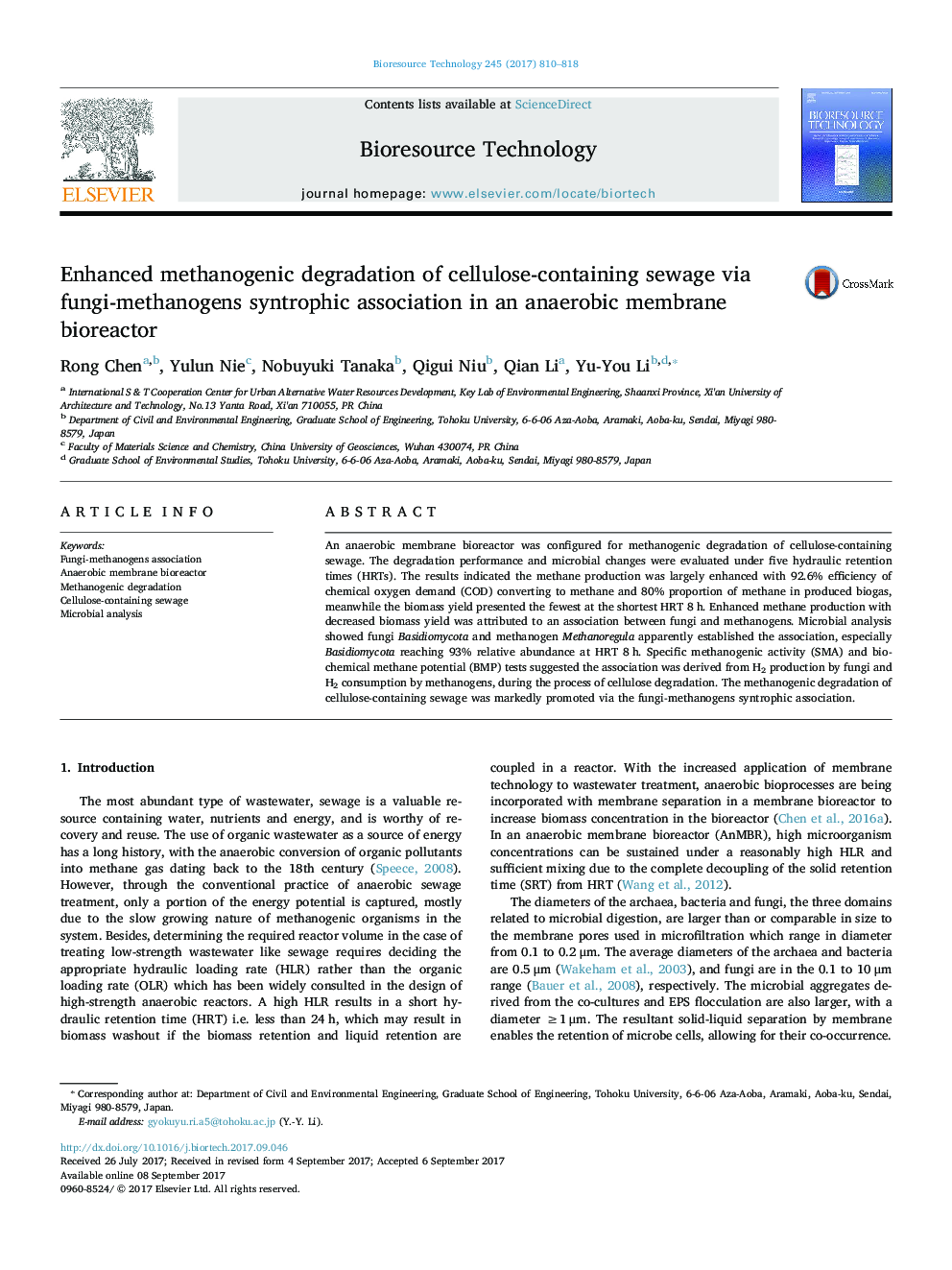| Article ID | Journal | Published Year | Pages | File Type |
|---|---|---|---|---|
| 4996794 | Bioresource Technology | 2017 | 9 Pages |
â¢Cellulose-containing sewage was effectively treated by an AnMBR at room temperature.â¢Rich abundance of fungi considerably enhanced cellulose decomposition at HRT 8 h.â¢H2 production by fungi and consumption by methanogens formed a syntrophic association.â¢Methanogenic degradation was largely promoted due to fungi-methanogens association.
An anaerobic membrane bioreactor was configured for methanogenic degradation of cellulose-containing sewage. The degradation performance and microbial changes were evaluated under five hydraulic retention times (HRTs). The results indicated the methane production was largely enhanced with 92.6% efficiency of chemical oxygen demand (COD) converting to methane and 80% proportion of methane in produced biogas, meanwhile the biomass yield presented the fewest at the shortest HRT 8Â h. Enhanced methane production with decreased biomass yield was attributed to an association between fungi and methanogens. Microbial analysis showed fungi Basidiomycota and methanogen Methanoregula apparently established the association, especially Basidiomycota reaching 93% relative abundance at HRT 8Â h. Specific methanogenic activity (SMA) and biochemical methane potential (BMP) tests suggested the association was derived from H2 production by fungi and H2 consumption by methanogens, during the process of cellulose degradation. The methanogenic degradation of cellulose-containing sewage was markedly promoted via the fungi-methanogens syntrophic association.
